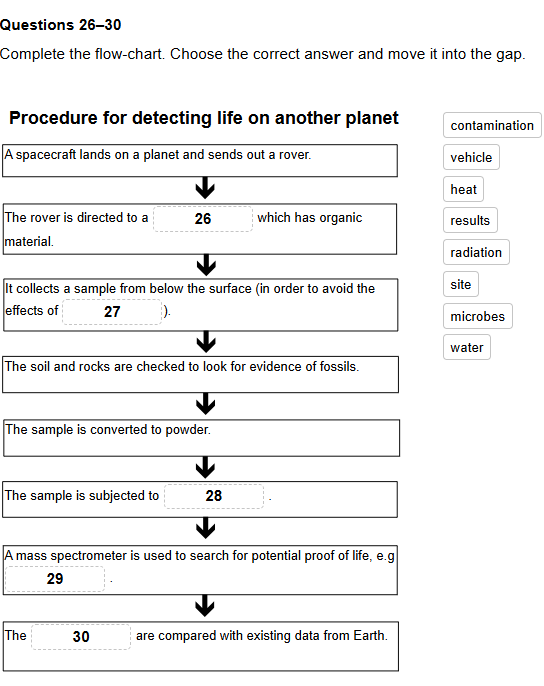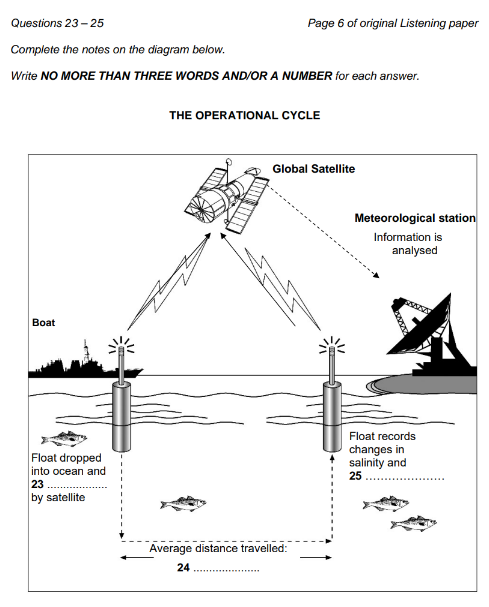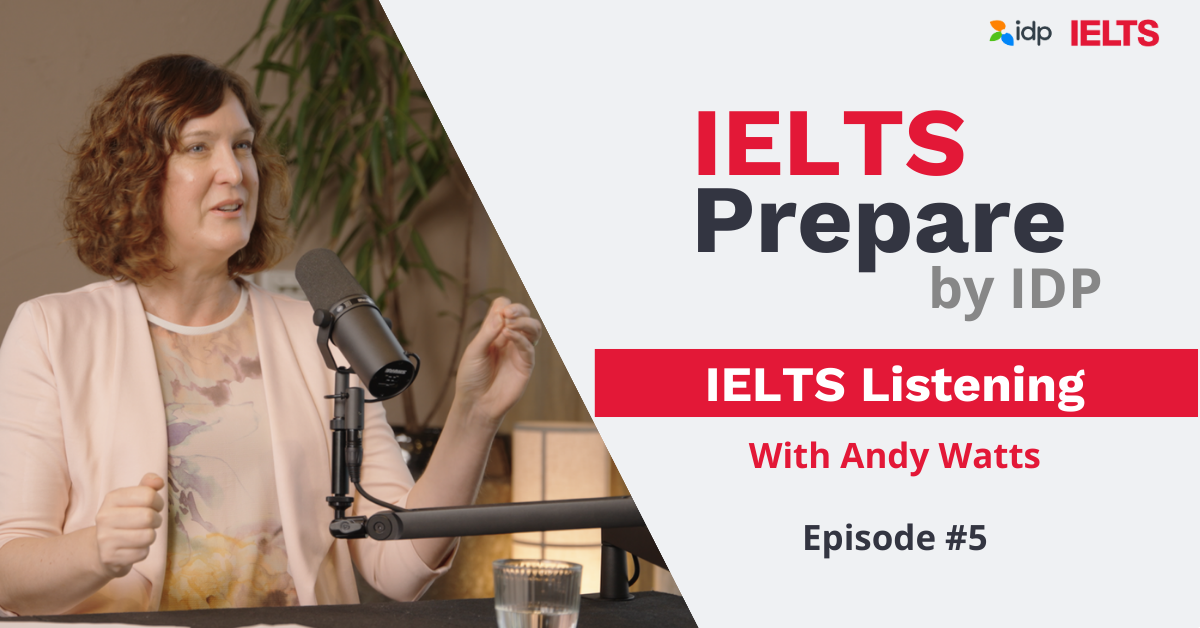At first glance, flow-chart questions might seem a bit intimidating as they look so different to other IELTS Listening questions.
But once you get to know this question type, you’ll realise that visual cues such as pictures, diagrams and arrows can help you to find the information you’re looking for.
In this article, we’ll give you a simple step-by-step guide so you can tackle IELTS Listening flow-chart completion questions with confidence.
What are IELTS Listening Flow-chart completion questions?
In the IELTS Listening test, flow charts are used to summarise the stages in a process or cycle. Flow charts use arrows to show the direction of the process, as shown in the example question below.

Source: The Official IELTS Familiarisation test | IDP IELTS
These questions come in two formats:
You might need to choose the correct answer from a list of options provided (see example above).
or
You might need to choose the correct answer from words you hear in the recording which fit into gaps provided. In this case, you won’t have to change the words in the recording in any way, but you’ll need to keep to the word limit given in the instructions.
This question type focuses on the main ideas a listener is most likely to write down, a useful skill for real-life situations like taking notes in university lectures or workplace meetings.
IELTS Listening Flow-chart completion tips
So how should you work through flow-chart completion questions? We’ve broken the process down into clear steps so you can approach these questions with ease.
Step 1: Read the instructions carefully
Do you need to select answers from a list provided?
Or do you need to write the exact words you hear in the recording to fill in the missing gaps?
If so, how many words and/or numbers are you allowed to write in each gap?
Quick task: Look at the sample question below. Where do you need to find the answers? Is there a word limit?

Source: Sample Listening A: Questions – IDP Education- Official IELTS Test Centre
Answers to quick task: You need to listen for the missing words in the recording and write them in the gaps. The word limit for each gap is three words and/or a number.
Step 2: Look at the visual cues
Flow charts show steps, stages or processes. Before the recording starts, look at the chart and note:
The starting point (where the process begins).
The direction of arrows (how the process flows).
Any other visual cues (e.g., pictures, diagrams, labels)
Quick task: Look at the flow chart of the operational cycle above and note down what you can learn from the visual cues before listening.

Try the English self-assessment tool.
Answers to quick task: The process begins with question 23 when the float is dropped into the ocean. If you follow the direction of the arrows, you can see the float travels through the water and the process ends with question 25. The pictures of the float and fish help give context.
Step 3: Predict type of missing information
Ask yourself: What type of word fits here? (e.g., noun, adjective, number, date, etc.).
Don’t rely on your own knowledge of the topic when choosing an answer. Even if you’re familiar with the subject, what matters is what the speaker says, which might be different from what you expect.
Quick task: Look at question 24 in the flow chart of the operational cycle. What type of information is missing from the gap?

Answer to quick task: As question 24 refers to the distance travelled, you need to listen for a number and probably a word for measuring distance like metres, kilometres or miles.
Step 4: Pay attention to signposting language as you listen
Speakers use signposting language to guide listeners through their talk or lecture. These are words or phrases that signal that the speaker is moving to a new point. They act like road signs to help you stay on track while listening.
In flow-chart completion tasks, listen for sequence words that show the speaker is moving to the next stage in the process.
Common examples: First, next, in the next stage, when, once, after
Quick task: Here’s an extract from the recording for the sample question on the operational cycle. Read the audio script and find two examples of signposting language that speaker uses to move on to different stages of the cycle.
The operational cycle goes like this. Each float is dropped in the ocean from a boat at a set point and activated from a satellite. Then, the float immediately sinks about a thousand metres. That’s two whole kilometres down in the water. It stays at this depth for about ten days and is carried around by the currents which operate in the ocean at this level. During this time, it’s possible for it to cover quite large distances...

Answers to quick task: Then, During this time.
Step 5: Review your answers
When the recording finishes, check your answers for the following:
Word forms (does the word fit in with the rest of the sentence?)
Spelling (both UK and US spelling is acceptable)
Number of words (are you following the word limit in the instructions?)
IELTS Listening Flow-chart completion practice
Ready to put these steps into practice?
Take our IELTS on computer sample Listening test. You’ll find a flow-chart completion question in Part 3.
Remember, strong listening skills open doors. Check out these articles to build confidence for your test - and for real conversations, lectures and work situations too.
